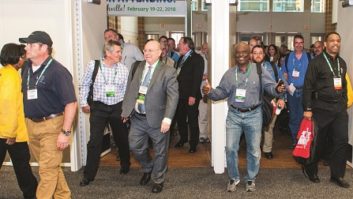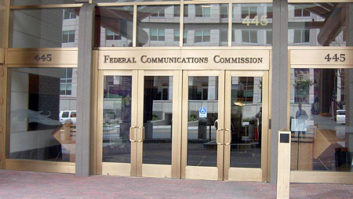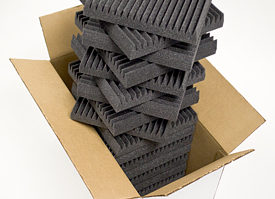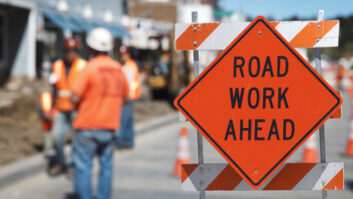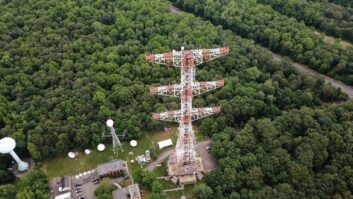This article originally appeared in the February 2025 issue of The Signal, the member newsletter of the Society of Broadcast Engineers.
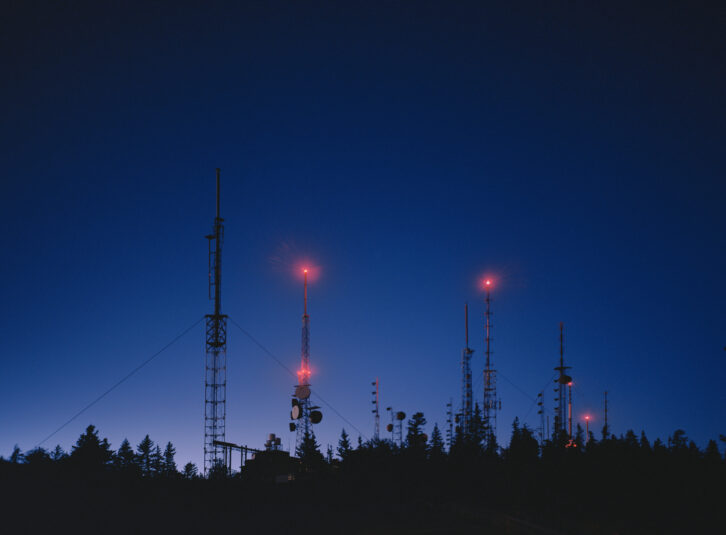
Imagine standing at the base of a towering structure, with the infrastructure of high-powered radio and TV all around you. For broadcast engineers, this is a daily reality, where the balance between technical precision and physical safety is paramount. This guide dives into the essential safety measures that can transform these towering giants from potential hazards into safe, efficient workplaces.
Slips, trips and falls: Ground-level hazards
Picture navigating a maze of cables and equipment, where one misstep could lead to a serious injury. Slips, trips, and falls are not just common — they’re a constant threat. For broadcast engineers, managing these hazards is crucial to maintaining both safety and operational efficiency.
To address these risks:
- Organize Workspaces: Ensure cables and wires are neatly secured to avoid tripping hazards, especially during equipment upgrades or troubleshooting.
- Maintain Clear Pathways: Regularly inspect and clear walkways, keeping them free of debris and ensuring proper drainage to prevent pooling water.
- Wear Appropriate Footwear: Slip-resistant, ANSI-compliant boots are essential for navigating diverse terrains safely.
- Inside Equipment Shelters: Maintain a clutter-free environment with adequate lighting to reduce risks and facilitate efficient troubleshooting.
RF energy: Invisible but significant risks

RF energy is an invisible danger lurking at tower sites. For broadcast engineers, the proximity to high-powered antennas means constant vigilance is required. Prolonged exposure can lead to serious health issues, making it essential to understand and mitigate these risks.
[Related: “NATE Releases New Work Zone Safety Guidelines”]
Key safety measures include:
- Site Assessments: Understand RF exposure levels at your location and map areas near high-powered antennas to identify zones with elevated risks.
- Personal RF Monitoring Devices: Equip engineers with devices that alert them to unsafe exposure levels, enabling real-time adjustments to minimize risks.
- Collaborate with Site Operators: Implement lockout/tagout (LOTO) procedures to reduce or shut down antenna power during critical maintenance.
- Daily Operations: Integrate RF safety into daily operations by aligning maintenance schedules with low-power transmission periods to minimize risks without compromising broadcasting continuity.
Falling objects: Protecting ground crews

Working beneath towering structures, broadcast engineers and ground crews face the ever-present danger of falling objects. Whether it’s a dropped tool or debris, the risk is real and requires proactive measures to ensure everyone’s safety.
Mitigation strategies include:
- Exclusion Zones: Rope off areas below active work zones and communicate clearly about restricted areas during maintenance activities.
- Tool Tethering Systems: Secure tools used at height to prevent accidental drops, minimizing disruptions to technical workflows caused by missing or damaged equipment.
- Head Protection: Always wear hard hats meeting ANSI Z89.1 standards, ensuring they are inspected regularly for durability and fit. Hard hats with chin straps help keep them securely in place.
- Effective Communication: Maintain clear communication between ground personnel and tower teams to ensure safety and operational efficiency.
NFPA-compliant signage: A safety necessity
Signage is more than just a warning — it’s a crucial safety tool. For broadcast engineers, clear and compliant signage can mean the difference between a safe site and a hazardous one. It guides non-technical personnel away from danger and helps maintain the integrity of critical systems.
Key types of signage include:
- Electrical Hazards: Highlight high-voltage equipment zones, especially near power supplies for transmission systems.
- RF Warnings: Ensure RF exposure areas are clearly marked, with boundaries aligned to safe working distances.
- Fire Hazards: Label storage areas for flammable materials, such as fuel for backup generators, to minimize fire risks.
- Signage Maintenance: Ensure signage is durable, strategically placed, and regularly updated to remain effective. Integrate signage with operational plans to ensure safety without disrupting site workflows.
Emergency preparedness: Ready for the unexpected
In the high-stakes world of broadcasting, emergencies can strike without warning. For broadcast engineers, being prepared is not just a precaution — it’s a necessity. A well-crafted emergency response plan can safeguard both lives and the vital systems that keep communications running.
Key elements include:
- First Aid Resources: Keep first aid kits accessible and ensure team members are trained in basic first aid techniques.
- Contact Information: Maintain updated details for emergency services, nearby hospitals and site managers, emphasizing quick access during critical incidents.
- Tailored Rescue Plans: Develop response protocols for specific scenarios, such as antenna failure, RF overexposure or structural damage, with input from engineers and safety personnel.
- Regular Drills: Conduct regular drills to familiarize engineers and crews with emergency procedures, ensuring swift and effective action when needed.
Fostering a culture of safety
Creating a culture of safety is a continuous journey. For broadcast engineers, it’s about more than just following protocols — it’s about embedding safety into every aspect of their work. This commitment ensures not only their well-being but also the reliability and efficiency of the systems they oversee.
Best practices include:
- Ongoing Training: Equip engineers with the latest knowledge on hazard identification, safe practices and RF safety standards.
- Encourage Hazard Reporting: Create a system for reporting unsafe conditions, empowering engineers to voice concerns without fear of reprisal.
- Routine Inspections: Regular audits help identify emerging risks and ensure compliance with safety standards.
Broadcast engineers, by integrating safety into their technical workflows, play a pivotal role in creating safer tower environments for all.
Conclusion
Whether on the ground or within equipment shelters, the risks at tower sites are ever-present. For broadcast engineers, the challenge is to balance safety with the technical demands of their role. By proactively addressing hazards and fostering a culture of vigilance, they can protect themselves, their teams and the critical infrastructure they maintain. With these guidelines, broadcast engineers can achieve both safety and operational excellence, ensuring the seamless operation of our communication networks.
The authors can be emailed at [email protected] and [email protected].
